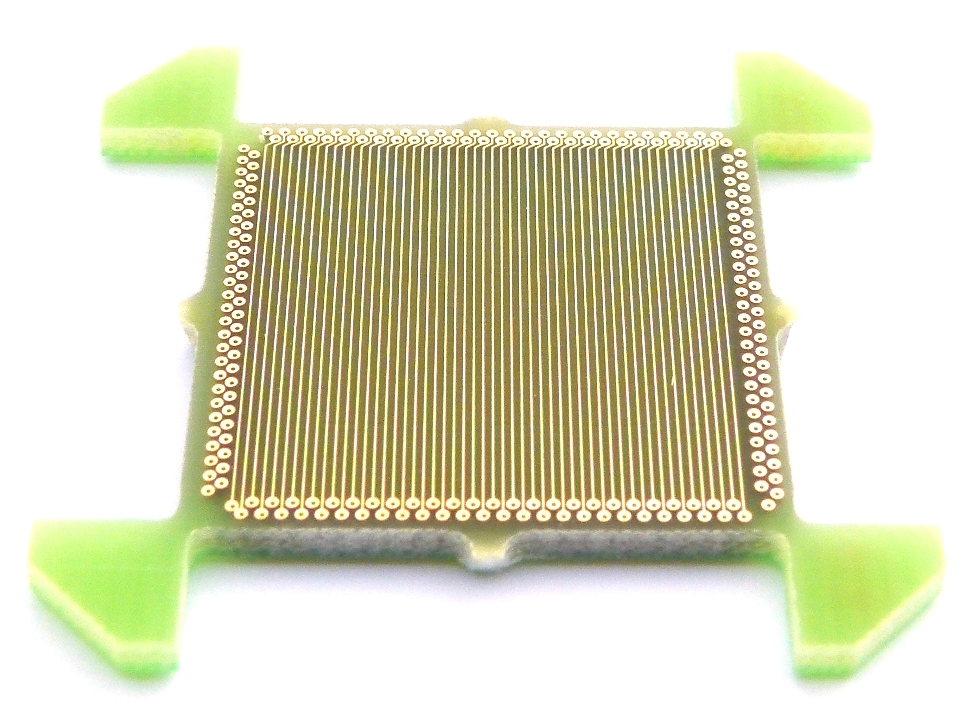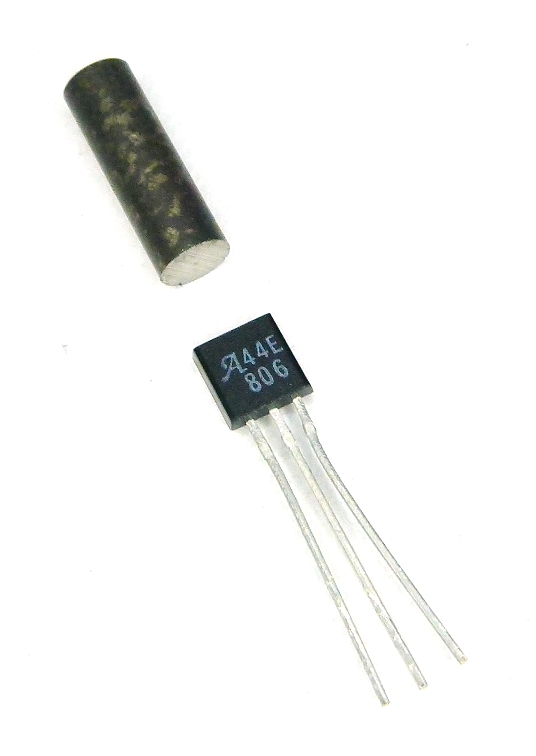Table of Contents
Magnetic sensor
| Stan Zurek, Magnetic sensor, Encyclopedia Magnetica, https://e-magnetica.pl/doku.php/magnetic_sensor |
Magnetic sensor - a sensor which detects or transduces some physical quantity by employing electromagnetic phenomena.1)2)3)4)
In a more popular, narrower meaning, “magnetic sensor” means a sensor of magnetic field, generated by Earth's magnetism, electric currents, permanent magnet, biological processes, etc.5)6)7)
In a wider meaning “magnetic sensor” denotes any sensor which transduces any one quantity to another, with some involvement of electromagnetism.
Most magnetic sensors detect or react to magnetic flux density B, but in some cases this can be scaled to measure magnetic field strength H.
A magnetometer is a complete device which utilises a magnetic sensor.8)
Magnetic sensors (in a plethora of technical solutions and implementations) are used to measure: amplitude and direction of magnetic field B, H, J and M9)10), electric current11), voltage12), physical displacement (linear and rotating)13)14), location of magnetic and non-magnetic as well as conductive and non-conductive components for industrial, medical and archaeologic applications15), non-destructive testing of material damage16), and many more quantities, which are directly or indirectly linked to electromagnetic phenomena.
It is not possible to describe all permutations of design of such sensors, and therefore this article gives just a few examples, for illustration of the breadth of the applications.
| → → → Helpful page? Support us! → → → | PayPal | ← ← ← Help us with just $0.10 per month? Come on…  ← ← ← |
Sensors of magnetic field
The value of magnetic field can be measured by a suitable sensor, which detects magnetic flux density B over some volume of space or material. Magnetic field strength H is typically detected as B and then converted to H or calibrated in the units of A/m.
Some magnetic sensors, such as these based on the Hall effect, exhibit direct proportionality between the measured magnetic quantity and the output signal they produce:
| $$ V_{out} = k_v ⋅ B_{meas} $$ | (V) |
| where: $V_{out}$ - output voltage of the sensor (V), $B_{meas}$ - measured flux density (T), $k_v$ - voltage proportionality constant (V/T) | |
and therefore the measured quantity B can be calculated directly from the produced output voltage:18)
| $$B_{meas} = k_b ⋅ V_{out} $$ | (T) |
| where: $B_{meas}$ - measured flux density (T), $V_{out}$ - output voltage of the sensor (V), $k_b = 1 / k_v$ - sensor proportionality constant (T/V) | |
However, many sensors do not exhibit such direct proportionality, either by principle of their operation, or by deliberate design.
For example, a compass shows only direction of the external magnetic field, regardless its amplitude (as long as it is large enough to move the needle).
Another example is the output voltage of an H-coil sensor, which is proportional to the derivative of the measured flux density B penetrating the coil. In order to convert the output voltage into the measured H, an integral has to be calculated either by an analogue electronic circuit or by digital computations, and additionally the signal has to be scaled by permeability of the material filling the coil (which has be linear for accurate measurement). Typically, non-magnetic materials are use as the formers for such coils.19)
The equations used for calculation of the proportionality constant (or proportionality function) are dictated by the operating principle of each sensor. For commercial sensors these are either specified by the manufacturer, or the sensor is calibrated directly in some units, so that the user of the sensor does not need to know the constant (gain) or the mathematical function of the sensor.
Indicators
Sensors can be used to measure a given quantity, which can be changing over some range, and such changes can be reflected in the signals produced by the sensors.
However, there are many applications in which only the event of exceeding some threshold is indicated. Therefore, such sensors cannot be used for “measurement” in the same meaning, and often the name “indicator” is used instead.
An example of such indicator is shown in the image. A special layer with deposited magnetic particles is used, and images are “recorded” on it. If a large magnetic field is applied to the layer (e.g. exceeding 100 kA/m) then images are permanently erased. It is a single-use device.
Such indicators are used for protection of meters against the theft of electricity or water.20)
Sensors of other quantities
Magnetic sensors can be used for detection of other quantities.
Electric current
Contactless sensors of DC as well as AC current can be built by using a magnetic core to guide and concentrate the magnetic flux, and a magnetic sensor placed in the air gap to sense the magnetic field which is proportional to the current to be measured. This principle follows from the Ampere's circuital law.
The output signal from the sensor can be then processed accordingly and calibrated to be proportional to the measured current (flowing in the primary circuit). So the sensor itself is used to detect the magnetic field, but it only serves an intermediate purpose in the measurement of some other quantity (electric current) which produces the magnetic field.
Measurement of electric current through magnetic means is utilised in many types of sensors and applications: current transformer, Rogowski coil, etc.
Currents sensors with additional electronics can also operate with the “open loop” or “closed loop” principles.21) Open-loop sensors are simpler in design and consume less power but rely on linearity of magnetic circuit and hence are typically less accurate.
Closed-loop sensors operate essentially as zero “detectors”, with a feedback circuit driving a current in an auxiliary winding on the core so that the magnetic field from the measured current and from the secondary current are cancelled. This consumes more power and is more expensive to make, but it does provide improved measurement accuracy and better linearity.
Most magnetic current sensors also provides inherent galvanic isolation, which is used in many applications where safety of the personnel or public is important.
Position
S. Zurek, E-Magnetica.pl, CC-BY-4.0
Linear, rotary or other position can be detected by means of Hall-effect sensors or other magnetic means.
There is a special variation of Hall-effect sensors which are designed such that the output signal operates similarly to digital signal (high or low state) if the input magnetic field exceeds some pre-determined threshold.22) Therefore, if some magnetised part is put close enough to the sensor this will be detected. Such sensors are widely used in industry, with some circuitry already built into the sensors. For example, as shown in the photograph, such sensor can have just three connections, two for power supply, and the third one for the high/low signal.
Another example of detection of position is a linear variable differential transformer (LVDT).23) The sensor comprises at least two coils which are coupled magnetically to the object whose position is to be measured. If the object moves towards one of the coils (and away from the other) then their impedance or induced voltages change and this can be detected with high precision.
Other industrial implications
Output “signal” of a magnetic sensor can be provided in a number of ways, depending on the underlying phenomenon, application and processing needs.
In a compass the “signal” is the physical position of the needle which directly indicates the direction of magnetic field.
In a Hall-effect sensor the output signal is typically some measurable voltage. In voltage transformers the output signal is also voltage, which is directly proportional to the measured quantity.
In current transformers the output signal is current, whose amplitude is scaled down by the ratio of the transformer.
In industrial applications often the sensors are designed to operated within some standardised range of signals, for example with the analogue output signal being represented always as current varying from 4 mA (meaning that the measured value is zero) to 20 mA (meaning full range of the measured signal).24)









